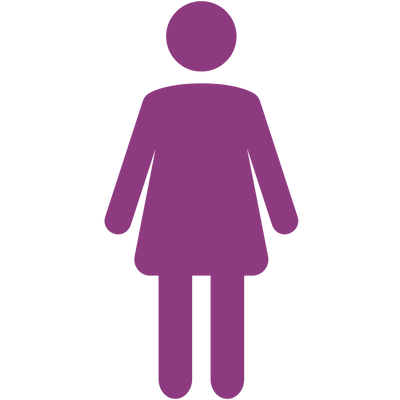
Data about domestic abuse
Domestic abuse is prevalent across all areas of the UK, and across all sections of our society.
There is rarely just one victim of domestic abuse – it affects whole families, and whole communities. We also know that the most vulnerable in society often find it hardest to access support.
The size of the challenge, shown below with the latest available figures, sets the context for our work to end domestic violence for everyone and for good.
Official statistics show the number of incidents of domestic abuse recorded by the authorities every year. But the problem is much bigger than shown in official statistics, as many victims and children don’t tell anyone about the abuse, and they are not recorded as crimes. That’s why SafeLives also uses data from our Insights database – one of the largest national databases of domestic abuse cases in the UK, with more than 39,000 records from 2016 to date.
-
 3.8 million people
3.8 million peopleaged 16 and over in England and Wales are estimated to have experienced some form of domestic abuse in the last year ending March 2025.
2.2 million female (9.1% of women) and 1.5 million male (6.5% of men) victims.
-
 1 in 4
1 in 4people aged 16 and over in England and Wales are estimated to have experienced domestic abuse since the age of 16.
-
 Each year more than 75,000 people
Each year more than 75,000 peoplein the UK are at high and imminent risk of being murdered or seriously injured as a result of domestic abuse.
-
 Women are much more likely than men to be victims of severe domestic abuse
Women are much more likely than men to be victims of severe domestic abuse -
 92%
92%of people accessing an IDVA service were women.
-

-
 1.3 million
1.3 milliondomestic abuse related incidents and crimes
were recorded by police in England and Wales, in the year ending March 2025.
-
 Eight
Eightwomen a month are killed by a current or former partner in England and Wales.
-
 6.1%
6.1%of people aged 16 years and over experienced partner abuse by a current or ex-partner in the last year ending march 2025
2.7% experienced abuse by a family member in the last year ending march 2025.
-
 22.5%
22.5%of people experienced abuse by a partner since the age of 16 years.
8.7% experienced abuse by a family member since the age of 16 years.
-
 Over 105,000 children
Over 105,000 childrenlive in homes where there is high-risk domestic abuse.
-
 78% of children living with domestic abuse
78% of children living with domestic abuseare directly harmed by the perpetrator of the abuse, in addition to the harm caused by witnessing the abuse of others.
-
 2.5 years
2.5 yearsis the average time victims at high risk of serious harm or murder live with domestic abuse before getting help.
-
 73% of victims
73% of victimssought help two times on average from professionals in the year before they got effective help to stop the abuse.
Key statistics about domestic abuse in England and Wales
-
 Over 61,900 incidents
Over 61,900 incidentsof domestic abuse in 2022-23.
A decrease of 4% compared to the previous year.
-
 Nine in ten (90%)
Nine in ten (90%)domestic abuse incidents occurred in a home or dwelling in 2022-23.
This figure can be split into 37% of incidents that occurred within the victim’s own home, 12% that occurred within a joint home and 5% that occurred in the suspected perpetrator’s home. Over a third (36%) of incidents occurred in an ‘other dwelling’. The remaining 10% of incidents occurred in the street (5%), licensed premises (0.6%) or an ‘Other’ location (5%).
-
 Over four in five (81%)
Over four in five (81%)incidents where gender information was recorded involved a female victim and a male suspected perpetrator.
This was the same as in 2021-22.
-
 3%
3%of Non-sexual crimes of violence were crimes recorded under the Domestic Abuse (Scotland) Act 2018.
There were 2,042 crimes recorded under the Domestic Abuse (Scotland) Act 2018 in 2023-24, the fifth year this legislation has been in place. Of those crimes, 94% (or 1,921) involved a female victim and 6% (or 121) had a male victim. This was a 15% increase compared to 2022-23 (from 1,781 to 2,042).
-
 Over 30,000 charges
Over 30,000 chargeswere reported to COPFS (Crown Office & Procurator Fiscal Service) with a domestic abuse identifier.
93% of charges reported in 2023-24 were given an initial decision to proceed to court (at the time the data was extracted).
-
 16.5%
16.5%of adults said they had experienced at least one incident of partner abuse since the age of 16 in 2018/20
-
 Women were almost twice as likely as men
Women were almost twice as likely as mento have experienced partner abuse (21.2% and 11.2% respectively).
-
 25%
25%of homicide victims recorded were female (13 out of 52) in 2022 -23.
46% (6) were killed by a partner or ex-partner.
-
 42%
42%of female victims were most likely to be killed by a partner or ex-partner over the past ten years.
In comparison, most male victims were killed by an acquaintance (55%) and had a lower likelihood of being killed by a partner or ex-partner (4%).
-
 More than 20%
More than 20%of operational police time is spent responding to domestic incidents.
-
 12,400
12,400children in Scotland are estimated to be living with the highest-risk of domestic abuse.
-
 Four years
Four yearsis the average duration of abuse before effective support is sought.
-
 62%
62%of children exposed to domestic abuse are also directly harmed.


